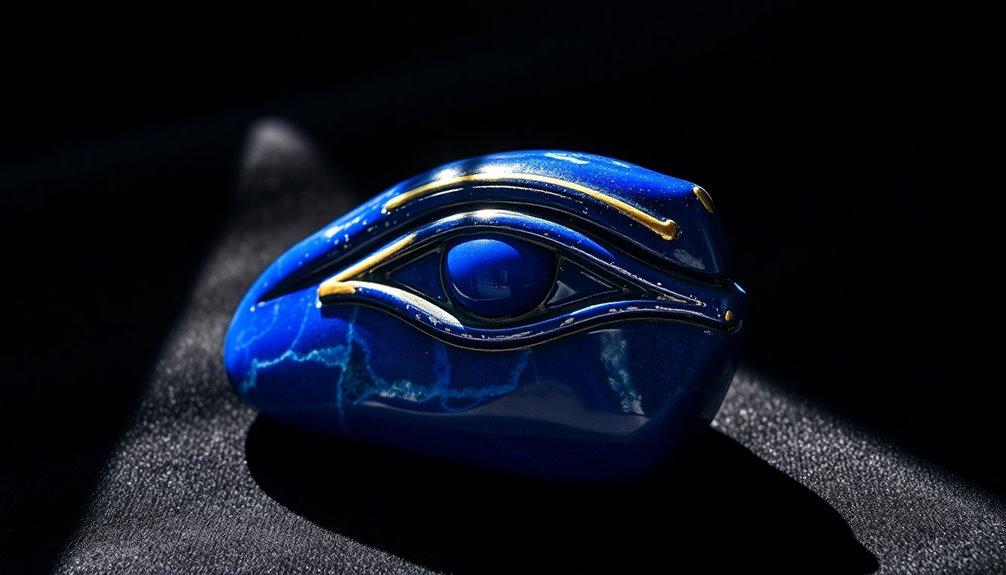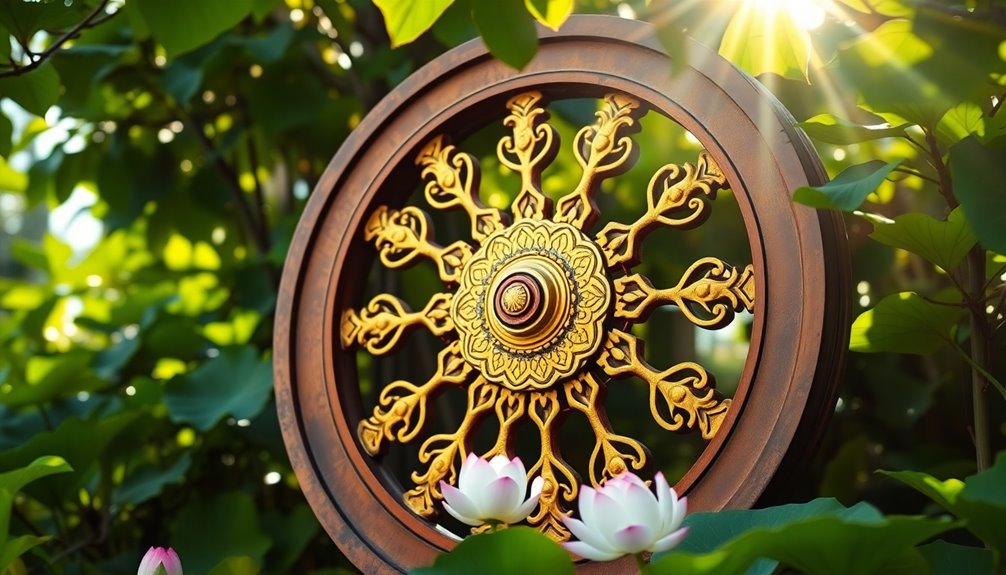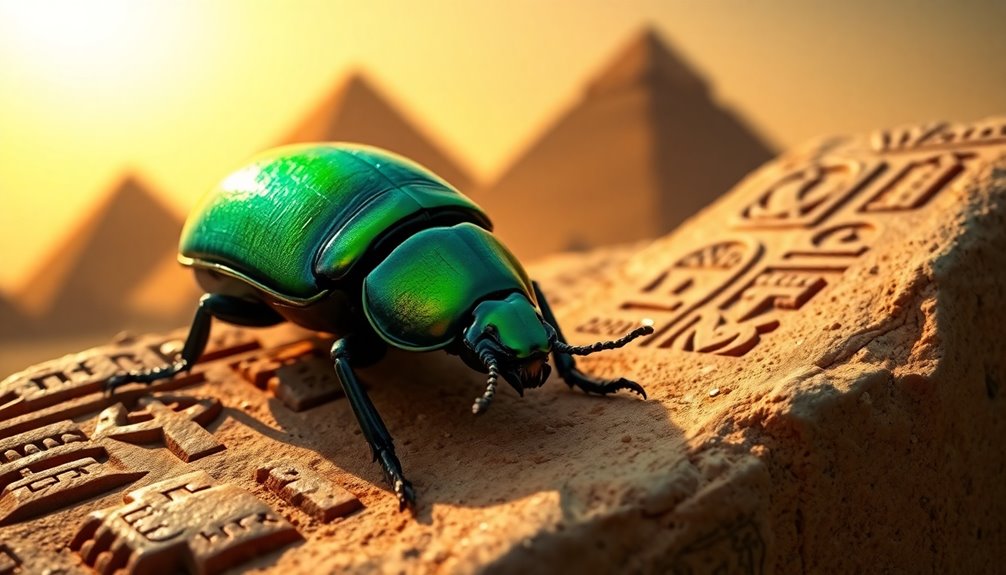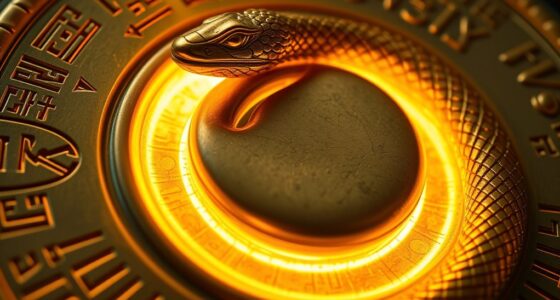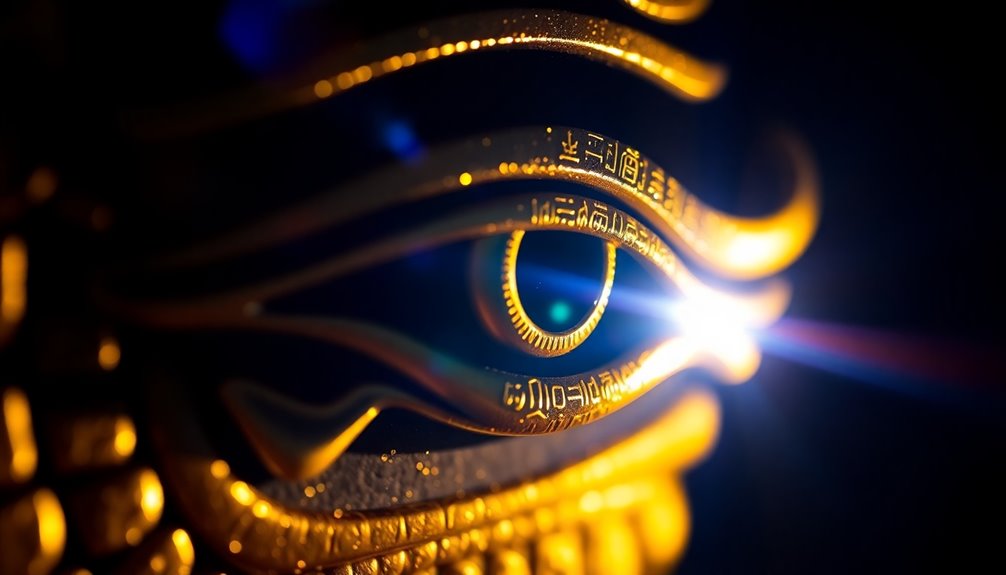The Right Eye of Horus has recently become a hot topic in Egyptology, linking it to the ancient Eye of the Sahara. This eye symbolizes protection and restoration, showcasing its significant role in mythology and funerary practices. It's associated with the sun god Ra and reflects themes of health, royal power, and safe passage to the afterlife. The discovery has sparked debates about its evolving meanings and how regional differences impact its interpretation. You'll uncover fascinating insights into the ancient culture and the ongoing discussions reshaping our understanding of its significance.
Key Takeaways
- The recent discovery linked to the Eye of the Sahara has reignited interest in the Right Eye of Horus and its significance in Egyptology.
- The Right Eye symbolizes protection, health, and restoration, deeply rooted in ancient Egyptian mythology and culture.
- Ongoing debates surround the evolving meanings of the Right Eye, influenced by regional worship practices and historical context.
- New artifacts challenge established narratives about the Eye's role in cosmic struggles and royal legitimacy, prompting further research.
- Future excavations and advanced imaging techniques may uncover deeper insights into the Eye's importance in ancient religious practices.
Discovery of the Right Eye
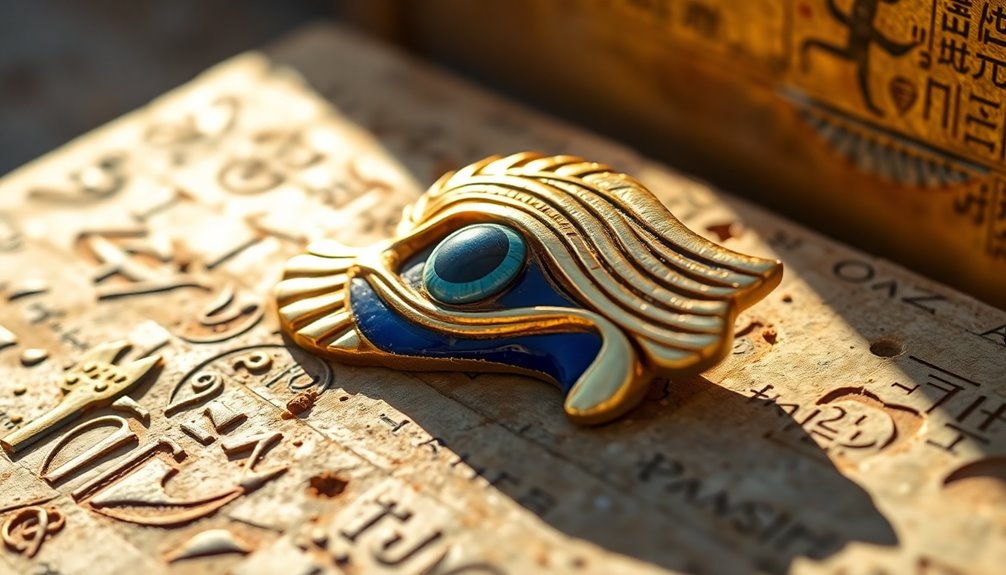
The recent discovery of the Right Eye of Horus has sparked excitement among archaeologists and historians alike. This find, linked to the Eye of the Sahara in Mauritania, aligns with ancient Egyptian mythology and offers new insights into the symbolism of the Right Eye.
Often associated with the sun, the Right Eye of Horus represents protection, health, and restoration, complementing its counterpart, the Left Eye, which symbolizes the moon.
Recent archaeological discoveries suggest that the Right Eye could hold historical significance beyond its mythological roots. It's believed that ancient Egyptians crafted amulets incorporating this symbol to safeguard individuals from harm and promote well-being, showcasing their advanced understanding of health and protection.
The Eye of Horus, including the Right Eye, is divided into six parts, each relating to specific human senses and fractions, illustrating the ancient Egyptians' sophisticated grasp of anatomy.
This controversial discovery is reigniting interest in Egyptology, prompting researchers to investigate deeper into the cultural implications of the Right Eye of Horus.
As you explore this fascinating topic, you'll uncover the intricate connections between ancient beliefs and their modern interpretations.
Implications for Egyptian Mythology

Exploring the implications of the Right Eye of Horus enriches our understanding of Egyptian mythology and its cultural significance. This symbol, often tied to the sun god Ra, embodies royal power and protection.
Unlike the Left Eye, which represents healing and the moon, the Right Eye stands as a powerful emblem in the cosmic struggle between order and chaos. Within the mythological narrative, the Right Eye of Horus was instrumental in defeating Set, reinforcing its role in maintaining cosmic balance.
Its association with wholeness and restoration highlights the belief that its fractions correspond to human senses, providing protection and well-being. This deep connection underscores the Eye's significance in daily life and governance.
Artistic representations of the Right Eye frequently appear in funerary contexts, emphasizing its vital role in ensuring safe passage to the afterlife and divine protection for the deceased.
The recent discovery of artifacts related to this symbol may reveal further insights into ancient Egyptian religious practices, enhancing our comprehension of how the Right Eye of Horus influenced both mythology and the lived experiences of individuals in ancient Egypt.
Cultural Significance of the Eye
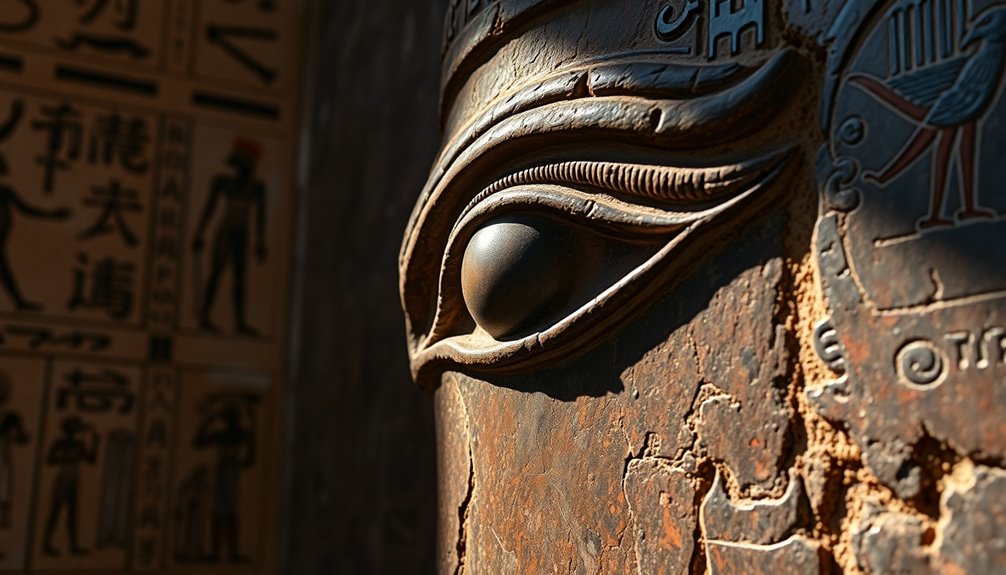
In ancient Egyptian culture, the Eye of Horus, or Wadjet, served as a powerful symbol of protection and healing. This emblem represented the mythology surrounding Horus's battle with Set, embodying the themes of health and restoration. You might find it fascinating that the Eye of Horus is divided into six parts, each corresponding to one of the human senses, with the missing piece symbolizing imperfection or magic.
The Eye of Horus frequently appears in ancient Egyptian art, emphasizing its significance in royal power and divine protection. It was particularly associated with the god Horus, making it an integral part of the ancient Egyptian belief system.
In funerary practices, the Eye was often used to guarantee safe passage and protection in the afterlife, highlighting its crucial role in both life and death rituals.
Today, the Eye of Horus remains a prominent symbol in modern culture, representing resilience and recovery. You'll notice its incorporation into spiritual practices and contemporary jewelry designs, proving that this ancient emblem still holds profound meaning in the domain of protection and healing.
Debates and Controversies in Egyptology

Debates surrounding the Right Eye of Horus have captivated Egyptologists for years, revealing a tapestry of interpretations that shift across dynastic periods. This ancient Egyptian symbol, often linked to protection and healing, has sparked various controversies regarding its significance, especially in funerary practices.
Here are some key points of debate:
- Symbolism Variations: Scholars argue that the Eye of Horus conveys complex meanings that change over time, influencing how it was used in amulets and rituals.
- Regional Differences: Recent artifacts suggest that regional variations in worship and iconography may have affected the interpretation of the Right Eye of Horus across different locales.
- Historical Context: Some theories propose connections between the Right Eye of Horus and significant events, like battles or royal ascensions, challenging established narratives in ancient Egyptian history.
- Artifact Discoveries: Ongoing excavations have unearthed new artifacts that compel Egyptologists to rethink the role of the Right Eye of Horus in ancient society, especially concerning its protective and healing attributes.
These debates continue to enrich our understanding of this iconic symbol in ancient Egyptian culture.
Future Research Directions

Future research directions for the Right Eye of Horus promise to deepen our understanding of this iconic symbol. By utilizing advanced imaging techniques, you can analyze artifacts and inscriptions linked to Horus, shedding light on their historical context.
Interdisciplinary collaborations between Egyptologists, archaeologists, and neuroscientists might reveal insights into the neuroanatomical connections represented by the Eye of Horus, enriching your comprehension of its significance.
Exploring regional variations in Horus worship could uncover how cultural practices shaped the iconography and symbolism of the Right Eye across ancient Egypt. Delving into the socio-political implications of this symbol may also provide clarity on its role in royal legitimacy and the power dynamics of the time.
Moreover, future excavations at significant temple sites like Edfu could yield new artifacts and inscriptions, expanding your knowledge of Horus's worship and the evolution of his iconography.
Each of these avenues promises to enhance your understanding of how the Right Eye of Horus functioned within the intricate tapestry of ancient Egyptian society. Embracing these research directions could lead to groundbreaking discoveries that redefine our understanding of this enthralling symbol.
Frequently Asked Questions
What Does the Right Eye of Horus Mean?
The Right Eye of Horus represents protection, royal power, and the sun. It symbolizes the sun god Ra's destructive aspects and his role in maintaining order.
When you think of it, you see a connection to healing and completeness, especially after Horus's battle with Set. The six parts of the eye relate to your senses, while the missing fraction signifies imperfection, highlighting its magical significance in ancient Egyptian culture.
What Does the Bible Say About the Eye of Horus?
The Bible doesn't mention the Eye of Horus, as it's primarily an ancient Egyptian symbol tied to protection and healing.
Instead, biblical texts focus on the worship of Yahweh, discouraging the veneration of other deities.
While some scholars see parallels between the Eye of Horus and biblical themes of divine watchfulness, these comparisons aren't directly supported by scripture.
Fundamentally, the Eye of Horus remains outside the biblical narrative and its teachings.
What Was the Ancient Belief About the Eye of Horus?
Imagine wearing a powerful amulet that brings protection and healing—this was the ancient belief surrounding the Eye of Horus.
You'd understand it as a symbol of divine authority, linked to Horus himself. Each part of the eye represented a human sense, highlighting the importance of wholeness and balance.
When you wore it, you weren't just warding off evil; you were embracing a piece of ancient wisdom that promised safety and prosperity in your life.
What Does 𓂀 Mean?
The symbol 𓂀 represents the Eye of Horus in ancient Egyptian mythology. It embodies protection, royal power, and good health, often associated with the sun god Ra.
When you see this eye, think of its role as a safeguard against evil and misfortune. It's divided into six parts, symbolizing completeness and balance, reflecting the ancient Egyptians' belief in harmony between life and death.
You'll find it in amulets and art throughout history.
Conclusion
In unraveling the mystery of the Right Eye of Horus, you're not just peering into an ancient relic; you're gazing into the heart of a civilization that thrived on symbolism and the divine. This discovery challenges established beliefs, much like the winds of change that swept through the ages. As you contemplate its implications, remember that every new finding can reshape our understanding, just as Horus himself rose to reclaim his rightful place in the cosmos.

